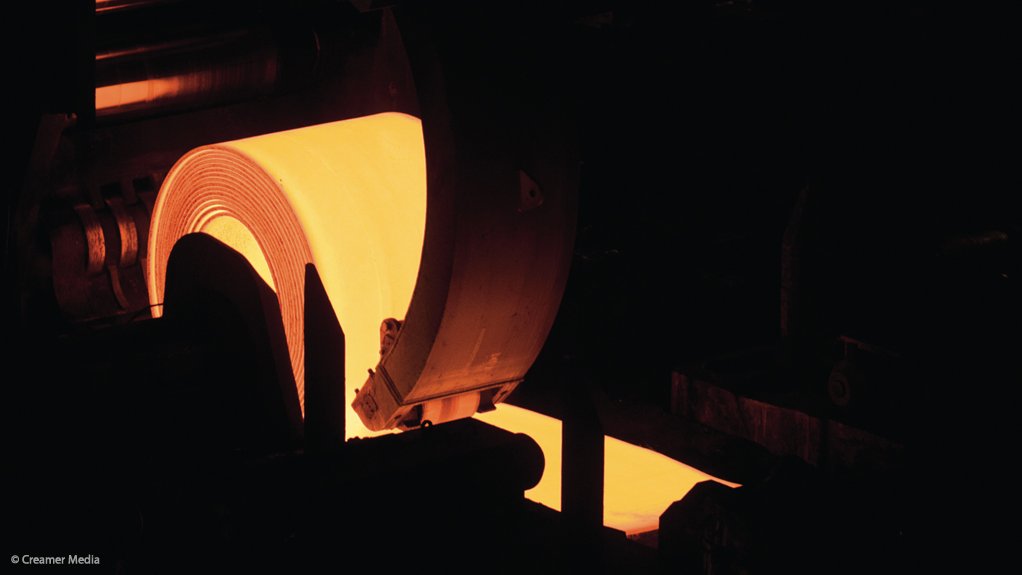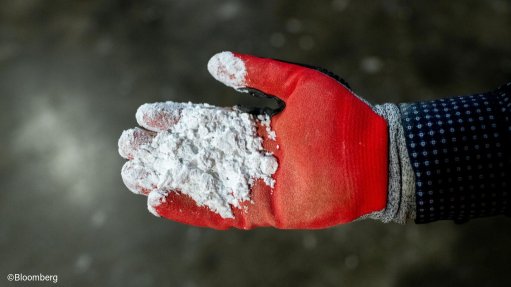Steel giant sees first demand ‘green shoots’ in years as GNU prioritises infrastructure and localisation
Steel producer ArcelorMittal South Africa (AMSA), which has been bemoaning weak domestic demand conditions for several years, reports that it is witnessing signs of “green shoots” in manufacturing and has also expressed cautious optimism over a potential for a recovery in energy-, construction- and automotive-related demand.
While reporting a 2% fall in volumes to 1.2-million tons in the first half of the year, as well as a material 10% slump in production to 1.2-million tons, largely owing to blast-furnace chilled hearth conditions at Vanderbijlpark in April and May, CEO Kobus Verster pointed to improving demand dynamics.
He attributed part of his optimism to the pro-business environment emerging under the Government of National Unity (GNU), but also pointed to several other market factors that he said held both short- and longer-term promise for steel consumption.
The prospect of an interest-rate reduction was highlighted as a key factor for stimulating future demand, alongside higher downstream steel fabrication that would be less constrained by the power disruptions that had crimped output in the real economy for more than a decade, but especially over the past three years when loadshedding intensified to an almost daily occurrence.
The National Treasury has estimated that about 35% of the growth slowdown from 2007 to 2021 can be attributed to the underperformance of network industries such as electricity and rail, with productivity shocks from these industries having significantly impacted the rest of the economy.
AMSA is expecting year-on-year growth in manufacturing of 1.2% on the back of more stable power supply and freight logistic services, while still pressing ahead with plans for a 200 MW solar PV plant in Vanderbijlpark and pursuing a deal with a private rail provider.
The JSE-listed group is also positioning itself for a more concerted localisation drive in energy, logistics and infrastructure under the GNU and following President Cyril Ramaphosa’s signing of the Public Procurement Bill in July, which would enable government departments and State-owned companies to prescribed local content during procurement.
In his recent Budget Vote address, Trade, Industry and Competition Minister Parks Tau reported that he would be leaning on local procurement to create early-stage demand in targeted sectors and indicated that he would seek to leverage eight existing sector masterplans to stimulate demand, with a steel masterplan being one such plan.
AMSA had calculated that South Africa’s transmission grid expansion programme alone could consume 450 000 t of structural steel between 2025 and 2032 and Verster also saw the company’s collaboration with renewable-energy original equipment suppliers yielding benefit as they sought to drive localisation.
Transnet’s R160-billion investment programme is also expected to be a source of demand, along with private sector participation investments in both rail and port operations.
“ArcelorMittal Rail and Structures is well positioned to support Transnet in rebuilding South Africa’s rail network,” Verster said.
PRIVATE RAIL?
However, AMSA is also in talks with a private rail operator to potentially replace Transnet Freight Rail as a service provider once the regulatory framework has been finalised for third-party access to the network.
While praising the new Transnet leadership for significant improvements in its service, Verster said it tariffs remained exorbitant and that the group was, thus, moving ahead with a plan to partner with an alternative supplier, which he refused to identify.
AMSA is also keeping an eye on the GNU’s ambitions in the areas of water infrastructure, dams, pipelines, bridges and roads, which are likely to require private-sector support in light of government’s weak fiscal position.
This view was supported by National Treasury director-general Duncan Pieterse, who told participants to an economics conference earlier in the week that mobilising private-sector resources to augment public-sector capability and finances was necessary to fast-track the provision of infrastructure.
Government, Pieterse said, had initiated various reforms to systematically crowd-in greater private-sector participation, as well as to simplify and modernise the country’s public-private partnership regulations.
Outside of the public sector, AMSA is engaging with naamsa | The Automotive Business Council and carmakers to establish an Auto Steel Demand Council, aimed at restoring confidence in local automotive steel supply and driving localisation.
“If one looks at the positive political changes that have happened, I am today looking forward more positively, and I think things will improve, whereas a year ago it was very negative,” Verster said in response to a question posed by Engineering News.
MORE PROTECTION
Nevertheless, AMSA will continue to lobby for protection in addition to the general 10% duties imposed on imports and will seek to have the additional 9% in safeguard duties on plate and hot-rolled coils increased and made permanent.
The group, which recently decided to reverse a decision to close its long-steel operations, is also pushing ahead with major capital investment plans, having issued a tender for a 1.7-million-ton-a-year electric arc furnace (EAF) at Vanderbijlpark, which will replace Blast Furnace C from 2028 and help the site decarbonise.
It is also considering an EAF investment in Newcastle as an alternative to a blast-furnace rebuild, scheduled for 2034.
To secure stable and cleaner electricity it will seek to buy an additional 200 MW of wheeled electricity later in the decade, in addition to its own solar production at Vanderbijlpark and various energy efficiency projects to reduce its sharply rising electricity bill, despite lower consumption.
It is also pursuing various plans to become “gas neutral”, but will participate in the gas aggregation company announced recently by the Industrial Gas Users Association of Southern Africa as part of plans to avert a so-called gas supply cliff.
However, Verster also expressed optimism that the supply cliff could be delayed for about two years and said discussions on a slower ramp down for Sasol were under way.
Article Enquiry
Email Article
Save Article
Feedback
To advertise email advertising@creamermedia.co.za or click here
Announcements
What's On
Subscribe to improve your user experience...
Option 1 (equivalent of R125 a month):
Receive a weekly copy of Creamer Media's Engineering News & Mining Weekly magazine
(print copy for those in South Africa and e-magazine for those outside of South Africa)
Receive daily email newsletters
Access to full search results
Access archive of magazine back copies
Access to Projects in Progress
Access to ONE Research Report of your choice in PDF format
Option 2 (equivalent of R375 a month):
All benefits from Option 1
PLUS
Access to Creamer Media's Research Channel Africa for ALL Research Reports, in PDF format, on various industrial and mining sectors
including Electricity; Water; Energy Transition; Hydrogen; Roads, Rail and Ports; Coal; Gold; Platinum; Battery Metals; etc.
Already a subscriber?
Forgotten your password?
Receive weekly copy of Creamer Media's Engineering News & Mining Weekly magazine (print copy for those in South Africa and e-magazine for those outside of South Africa)
➕
Recieve daily email newsletters
➕
Access to full search results
➕
Access archive of magazine back copies
➕
Access to Projects in Progress
➕
Access to ONE Research Report of your choice in PDF format
RESEARCH CHANNEL AFRICA
R4500 (equivalent of R375 a month)
SUBSCRIBEAll benefits from Option 1
➕
Access to Creamer Media's Research Channel Africa for ALL Research Reports on various industrial and mining sectors, in PDF format, including on:
Electricity
➕
Water
➕
Energy Transition
➕
Hydrogen
➕
Roads, Rail and Ports
➕
Coal
➕
Gold
➕
Platinum
➕
Battery Metals
➕
etc.
Receive all benefits from Option 1 or Option 2 delivered to numerous people at your company
➕
Multiple User names and Passwords for simultaneous log-ins
➕
Intranet integration access to all in your organisation



















